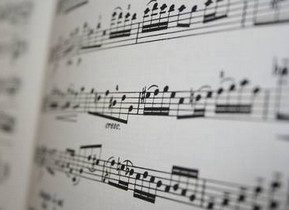
Riddles of the musical text and creative answers of the performer
 Throughout the history of performance, some musicians trusted their intuition and creatively played with the composer’s ideas, while other performers carefully followed all the author’s instructions. One thing is indisputable in everything – it is impossible to break the tradition of competent reading of the author’s musical text.
Throughout the history of performance, some musicians trusted their intuition and creatively played with the composer’s ideas, while other performers carefully followed all the author’s instructions. One thing is indisputable in everything – it is impossible to break the tradition of competent reading of the author’s musical text.
The performer is free to find timbre delights at will, slightly adjust the tempo and level of dynamic nuances, maintain an individual touch, but change and independently place semantic accents in the melody – this is no longer an interpretation, this is co-authorship!
The listener gets used to a certain way of organizing the music. Many admirers of the classics specially attend concerts at the Philharmonic in order to enjoy live the beauties of their favorite musical works, and they do not at all want to hear progressive performing digressions that distort the true meaning of the world’s musical masterpieces. Conservatism is an important concept for classics. That’s why she is!
In musical performance, two concepts are inextricably adjacent, on which the foundation of the entire performing process is laid:
- content
- technical side.
In order to guess (perform) a piece of music and reveal its true (author’s) meaning, it is necessary that these two moments organically intertwine together.
Riddle No. 1 – content
This riddle is not such a riddle for a competent, educated musician. Solving the content of music has been taught in schools, colleges and universities for many years. It’s no secret that before playing, you need to carefully study not the notes, but the letters. First there was the word!
Who is author?!
The composer is the first thing to focus on. The composer is God himself, the Meaning itself, the Idea itself. The first and last name in the upper right corner of the sheet music page will guide you to the correct search for content disclosure. Whose music are we playing: Mozart, Mendelssohn or Tchaikovsky – this is the first thing we need to pay attention to. The composer’s style and the aesthetics of the era in which the work was created are the first keys to a competent reading of the author’s text.
What are we playing? Image of the work
The title of the play is a reflection of the idea of the work; this is the most direct content. The Viennese sonata is the embodiment of a chamber orchestra, the baroque prelude is the organist’s voiced improvisation, the romantic ballad is a sensual story from the heart, etc. If we interpret program music – music with a certain name, then everything is even simpler. If you see “Round Dance of the Dwarves” by F. Liszt, or “Moonlight” by Debussy, then unraveling the mystery of the content will only be a joy.
Many people confuse the understanding of the image of music and the means of its implementation. If you think that you understand 100% the image of the music and the style of the composer, this does not mean that you will perform it just as skillfully.
Riddle No. 2 – embodiment
Under the musician’s fingers, the music comes to life. Note symbols turn into sounds. The sounding image of music is born from the way certain phrases or episodes are pronounced, what the semantic emphasis was placed on, and what was obscured. At the same time, this adds up and gives birth to a certain style of the performer. Believe it or not, the author of this article can already determine from the first sounds of Chopin’s etudes who is playing them – M. Yudina, V. Horowitz, or N. Sofronitsky.
The musical fabric consists of intonations, and the skill of the performer and his technical arsenal depend on how these intonations are voiced, but the arsenal is more spiritual than technical. Why?
The outstanding teacher G. Neuhaus offered his students an amazing test. The task required playing any one note, for example “C”, but with different intonations:
Such a test proves that no amount of the most advanced technical aspects of a musician will matter without an inner understanding of the meaning of the music and intonation. Then, when you understand that “excitement” is difficult to convey with clumsy passages, then you will make every effort to ensure the evenness of the sound of scales, chords, and small beaded techniques. Work, gentlemen, only work! That’s the whole mystery!
Teach yourself “from the inside,” improve yourself, fill yourself with different emotions, impressions, and information. Remember – the performer plays, not the instrument!





